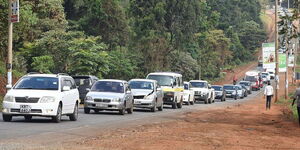The National Transport and Safety Authority (NTSA) is exploring ways of replacing human examiners with technology during theory and practical testing of Kenyan drivers.
In its newly released National Road Safety Action Plan 2023-2027, the authority noted that it is working to automate the driving test, which marks the last stage before an individual is allowed to drive on Kenyan roads.
NTSA argued that if implemented, technology would ensure a standardised delivery of qualified drivers devoid of human examiner error.
"The role of technology in road safety has been established on many occasions and circumstances. The testing of drivers before licensing is very important to ensure that qualified drivers are released to the market," reads the plan in part.
"The use of technology by automating driver testing will ensure standardised delivery of test and reduces/eliminate the human component on the part of the examiner. Automation of driver testing will be undertaken progressively starting with the theory testing followed by practical testing."
A source from the authority also confirmed to Kenyans.co.ke that the use of technology is expected to boost effectiveness in driver testing across the country.
On Wednesday, NTSA convened a two-day national road safety pre-conference that brought together stakeholders to discuss strategic priorities of the National Road Safety Action Plan (2023-2027).
In the conference, the authority seeks to get a buy-in from the road safety stakeholders with eight priorities already laid out.
They include coordination of delivery partnerships, road safety funding, infrastructure safety and vehicle safety standards and compliance.
Others are enforcement targeting unsafe behaviour, post-crash services and Road safety database, monitoring and evaluation systems.
The conference is under the support of the World Bank.
NTSA will also enforce strict adherence to the 18-year-old age limit for individuals allowed to operate vehicles while requiring all boda boda operators to belong to a Sacco.












